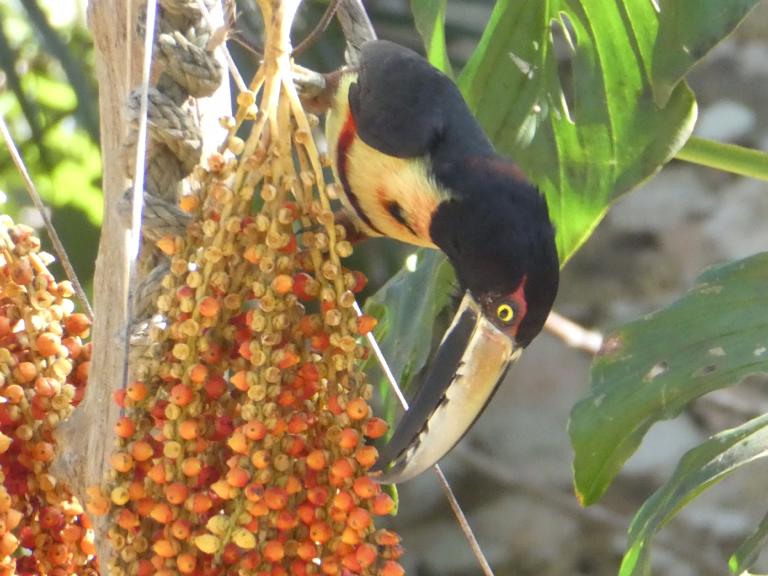
Mutualistic interactions between fruits and frugivores (i.e., fruit-eating and seed-dispersing animals) are dependent on ‘trait matching’: the largest fruits can only be swallowed and effectively dispersed by the largest frugivores. However, due to the ongoing extinction of most large-bodied animals, plants with large fruits may be suffering from dispersal limitation.
Backgroundand context
In this project, you will mobilize functional trait data on fruit and seed sizes from herbarium specimens across a wide range of tropical plant families to assess evidence for fruit-to-body size trait matching in seed dispersal networks. Mutualistic interactions between fruits and frugivores are particularly prominent in the tropics, where up to 90% of plant species have fleshy, vertebrate-dispersed fruits. Interestingly, Earth has experienced a relatively recent (Late Quaternary), severe extinction event, primarily affecting large-bodied animals, including megafauna (animals > 44 or 1000 kg). These extinctions may have led to the distortion of fruit-to-body size trait matching across the tropics, but quantitative assessments of this are missing. Furthermore, some places may show larger distortion and possible mismatch between fruit size and frugivore body size than other places. For example, the Neotropics have experienced more severe Late Quaternary megafaunal animal extinctions than the Afrotropics.
Objectivesand goals
We aim to understand the impact of Quaternary as well as ongoing extinctions on fruit-to-body size trait matching, by evaluating in which places and ecological networks fruit-to-body size trait matching is most distorted (e.g., absent or less strong), and in which places it is still intact. We hypothesize that the strength of trait matching differs systematically across ecological networks, with strong plant–frugivore trait matching found in places that have had relatively little human impact compared with those with more severe human impact (e.g., mainland compared to islands, Africa compared to Americas/Asia, Amazon rainforest compared to Atlantic forest).
Methodsand approach
We will measure functional trait data on fruit and seed sizes from herbarium specimens located at Naturalis Biodiversity Center, focusing on tropical plant species from seed dispersal networks. These networks include observed plant-animal seed dispersal interactions, and have already been synthesized. Furthermore, you will link your fruit and seed size data to body size and gape width data of the frugivores from the networks, and use fourth-corner analysis to assess the strength of trait matching across networks in different places. Part of the fruit and seed size data has already been assembled – your work will add to this ongoing effort.
Requirements
Interest in functional ecology, experience with data analysis in R.